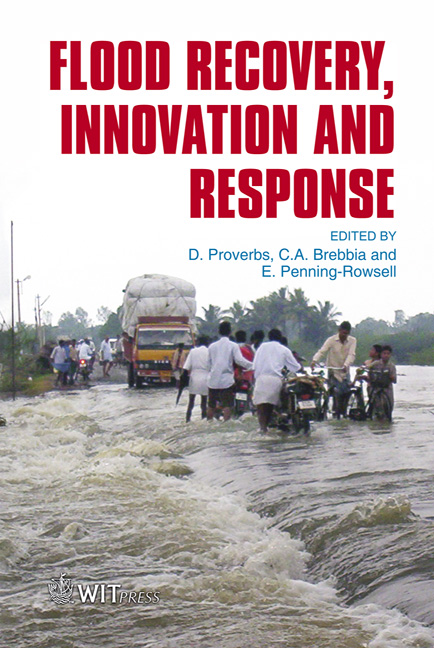Two-dimensional Urban Flood Simulation: Fukuoka Flood Disaster In 1999
Price
Free (open access)
Transaction
Volume
118
Pages
9
Page Range
59 - 67
Published
2008
Size
1,288 kb
Paper DOI
10.2495/FRIAR080061
Copyright
WIT Press
Author(s)
H. Hashimoto & K. Park
Abstract
Short-time heavy rains occurred in Fukuoka City, Japan on June 29, 1999. As a result, the Mikasa and Sanno-Channel rivers overflowed their banks and the flooding water moved down roads to the railway station known as ‘Hakata-eki’. This area is a dense city centre with many houses and office buildings. The purpose of the present study is to develop a two-dimensional flood simulation model in dense urban areas. The flood simulation model of Hashimoto et al. (Overland flood flow around the JR Hakata-eki station from the Mikasa and Sanno-Channel river in Fukuoka city on June 29, 1999, J. JSNDS 21-4, pp. 369– 384, 2003 (in Japanese)) is introduced. The model considers the effect of the high density of buildings and houses on the flood flow in momentum and continuum equations. The momentum equations include two kinds of resistance terms. One is due to bottom shear stresses and the other due to drag forces on the buildings and houses. The continuum equation includes the area density of buildings and houses as their effect on flood flow. This flood simulation model is applied to the Fukuoka flood disaster in 1999. The behaviour of the flood flow from the rivers is computed for various values of the roughness coefficient for the Manning equation and drag coefficient for buildings and houses. The value of 0.043 is suitable for Manning’s roughness coefficient and that of 2.05 for the drag coefficient. Keywords: urban flood, flood flow simulation, Fukuoka flood disaster, risk management. 1 Introduction There are many crowded urban areas in Japan. These urban areas sometimes have experiences of serious flood disasters. In such flood events, local
Keywords
urban flood, flood flow simulation, Fukuoka flood disaster, risk management.





